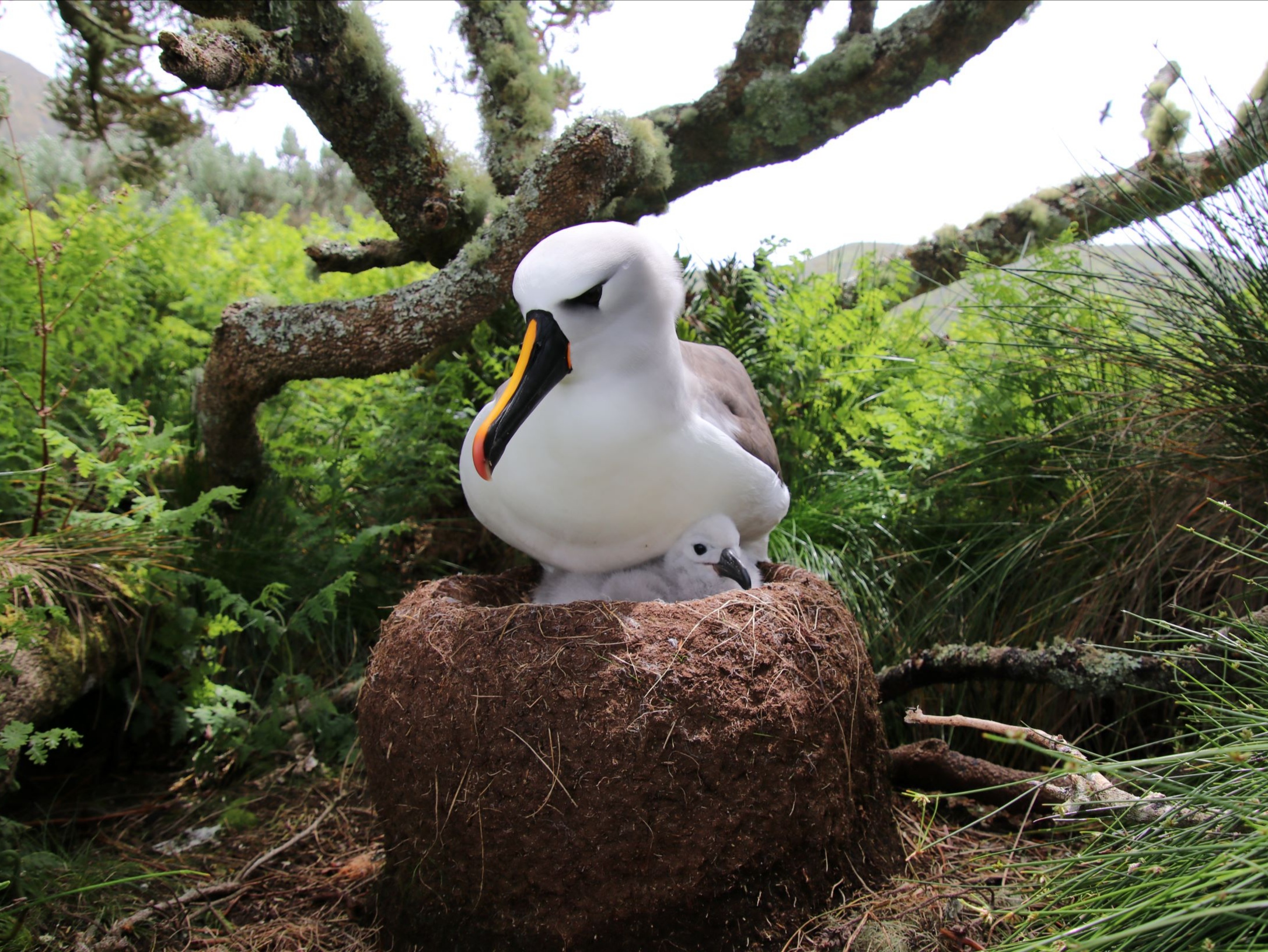
Atlantic Yellow-nosed Albatross by Lea Finke of Artists & Biologists Unite for Nature (ABUN) for World Albatross Day 2020, after a photograph by Alexis Osborne
Chris Haney (Terra Mar Applied Sciences, Washington, DC, USA) and colleagues have reviewed the occurrence of seabirds in the Gulf of Mexico, publishing in the open-access journal Marine Ornithology. Among the birds covered is the ACAP-listed Yellow-nosed Albatross Thalassarche chlororynchos, with a summary given of nine published records from the Gulf of Mexico or vicinity. No albatrosses were seen during the actual at-sea surveys conducted. The publication also gives information on 17 species of storm petrels, petrels and shearwaters, including a single published record of an ACAP-listed White-chinned Petrel Procellaria aequinoctialis that was collected alive from the surf zone in Texas but died during rehabilitation,
The paper’s abstract follows:
“The birds in the U.S. Gulf of Mexico have long been poorly studied. Given statutory obligations to protect migratory birds and endangered species, three broad-scale vessel and aerial programs initiated since 2010 have now surveyed the entire northern Gulf. Vessel coverage alone exceeds 700 d and 74,000 km of observer effort using 300-m strip transects. We supplemented these survey data with earlier, smaller-scale studies, eBird checklists, literature reviews, and other less accessible sources to create snapshot summaries of relative abundance, seasonal occurrence, and regional distribution for 117 taxa of marine and water birds reported from the northern Gulf (113 of which were substantiated with physical evidence). Using taxonomic and functional criteria, we identified 56 taxa characteristic of open shelf, slope, and pelagic waters (federal jurisdiction), 41 taxa with primarily coastal affinities (state and federal jurisdiction), and 20 taxa of sea and diving ducks. High species richness of marine birds in the northern Gulf is attributed to (1) a temperate-to-tropical gradient facilitating diverse marine environments year-round; (2) varied geographic origins of marine bird species using the Gulf; and (3) a mostly enclosed sea basin acting as a vagrant trap for wide-ranging species. Our taxonomic list and status updates seek to bridge information gaps for marine birds now subject to accelerated commercial uses of this region's continental shelf, including newly proposed offshore wind energy development. Other applications include guiding risk and vulnerability assessments of Gulf marine birds, providing core content for seabird observer training, and prioritizing environmental impact reviews and monitoring programs in offshore energy construction and operations plans.”

An Atlantic Yellow-nosed Albatross broods its chick on Gough Island, photograph by Chris Jones
Click here for records of albatrosses, including the Atlantic Yellow-nosed, that have crossed the equator into the northern hemisphere in the Atlantic Ocean. Records featured in ACAP Latest News include birds from Canada and the United Kingdom
Reference:
Haney, J.C., Michael, P.E., Gleason, J., Wilson, R.R., Satgé, Y. G., Hixson, K.M. & Jodice, P.G.R. 2025. Relative abundance, seasonal occurrence, and distribution of marine birds in the northern Gulf of Mexico. Marine Ornithology 53: 189-206.
John Cooper, Emeritus Information Officer, Agreement on the Conservation of Albatrosses and Petrels, 29 April 2025

 English
English  Français
Français  Español
Español